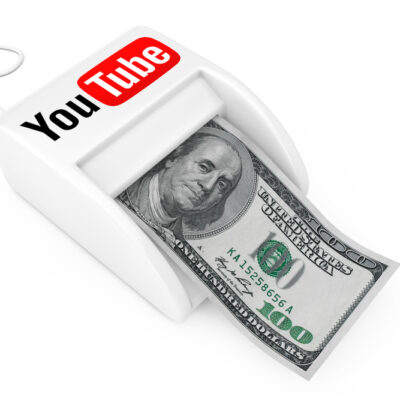Did you know that, at this moment, the amount of URLs and links on the internet is over 4.4 billions? And with us moving from human-to-human communication to social networks and digital marketing tools, it’s going to get worse. That’s why we need link shortener services. Let’s take a quick look back on our history with URL and link shorteners. This will give us a better understanding of how they work, when to use them, and how they can help your brand.
There are a number of URL shortening services that you can use online. I’ve been using URL shortening for years and have tested a number of different providers. For this article, I’m going to share my results and let you know which providers I consider to be the best. The context for this review is based upon services that provide unlimited URL shortening with no limits on the types of links you can shorten.
Bitly
Bitly is a well-known URL shortening service, which also offers analytics, tracking and other features. It has been around since 2008 and is used by more than 15 million users worldwide.
Bitly’s main competitors are Bitly, Goo.gl (Google), Ow.ly (Ow.ly) and Tinyurl.com (TinyURL).
Features
Bitly has a lot of features that you can use to shorten any link you want:
• Bitly link tracking – Track clicks, conversions and conversions on any link you’ve shortened with Bitly
• Analytics – Get detailed reports about your links’ performance
• Share tools – Use buttons from third-party services like Facebook Messenger, Twitter or LinkedIn to share your links with your audience
Bitly offers three main products:
The free version of Bitly allows users to create unlimited shortened URLs and access analytics reports on how many clicks their links have received. It also provides basic security features like link expiration, password protection and blacklisting.
The paid version called Pro costs $9 per month or $99 per year. It includes all the features of the free plan plus access to additional analytics reports, advanced security features such as IP address blocking and whitelisting, custom domain support and more.
Bitly Enterprise is available on an annual subscription basis only for businesses that need additional features not found on Bitly’s other plans such as user authentication and access control tools along with advanced reporting capabilities that allow companies to track how their links are performing across multiple channels such as social media or email campaigns.
TinyURL
TinyURL is probably the most popular URL shortener in the world. It was created in 2001 by Davy Jones, one of the co-founders of Mozilla Firefox.
TinyURL works by converting URLs into shorter codes, which can be easily shared on social media or anywhere else online. You can use TinyURL to shorten links from any website or app that allows you to copy/paste links, including social media sites like Facebook, Twitter and Google+.
The TinyURL interface is simple and straightforward with no need for an account or password to get started with the service. Just paste your URL into the box at the top of the page and hit “Shorten!”. You will then see your shortened URL appear in another box below it. It will look something like this: https://tinyurl.com/y6hf7h7d
The service has been around for a long time, with millions of users each month. TinyURL can be used to shorten URLs on any web page, including social networks like Facebook or Twitter. You can also use it to create custom shortened links that you can share with others.
- The most important features of this service include:
- Shorten URLs from any web page
- Create custom short links in different lengths (1 to 8 characters)
- Add up to five keywords to your shortened URL
- Customize your shortened links with a color scheme (black or white)
Ow.ly
Ow.ly is a URL shortener that offers users a free service. It is developed by the same company that was behind the popular URL shortening service bit.ly, which was acquired by Twitter in 2011. Since then, Ow.ly has been providing its users with a free shortening service for short URLs, as well as an analytics tool to track the clicks on their shortened links.
The main difference between Ow.ly and bit.ly is that with the latter you get to keep your statistics after you stop using it; while with Ow.ly you do not have access to your statistics once you stop using their service.
Ow.ly is one of my favorite URL shorteners, because it’s easy to use and has a ton of features.
It’s fast, and it’s free.
If you’re looking for a URL shortener that can do more than just shorten your links, then Ow.ly is probably the best choice for you. It has some powerful features that many other services don’t have, like customizable analytics tracking and link tracking tools that let you see how many clicks your shortened links are getting.
Ow.ly also has some basic social media sharing tools built right into its interface so you can easily share your shortened links on Facebook or Twitter with just a few clicks of your mouse.
Ow.ly is one of the oldest URL shortening services on the Internet, having been around since 2006 when it was launched by a small software development company called Sparkcentral in Australia. The service gained popularity quickly due to its ease of use and powerful features — including analytics tracking — which made it an attractive alternative to other popular URL shorteners like TinyURL and Bitly at the time (and still do today).
Rebrandly
Rebrandly is a URL shortening service that lets you create custom links. You can share your links on social media, embed them in emails or add them to your website. It has a simple interface and comes with a link tracker that shows you how many clicks your links have received.
Rebrandly makes it easy to create a free account, which allows you to shorten URLs or create custom links right away. You can shorten up to five links at once, but there’s no limit on how many times you can use the service per month. If you want more than five shortened URLs, then you’ll need to upgrade to one of Rebrandly’s paid plans.
Rebrandly offers two types of paid plans: Business and Premium Plus. The Business plan costs $9 per month for up to 100 shortened links and allows you to use Rebrandly’s API if you want to integrate it with other apps or software programs. The Premium Plus plan costs $29 per month for up to 1,000 shortened links and includes all the features of the Business plan as well as additional features such as unlimited branding changes and analytics reports for all of your shortened URLs.
buff.ly
Buff.ly is a URL shortener that allows users to create short links for different purposes. It has a lot of features like the ability to track clicks, see analytics and share content on social media platforms.
The service is available on mobile devices as well as desktops, which makes it easier for users to access this tool on the go or when they are not at their desktops.
Buff.ly offers a free plan that allows you to create up to 100 links per month, which is pretty much enough if you only need a few short links for your personal use. If you want more than 100 links per month, then you will have to upgrade to one of the paid plans that start at $3 per month for 10k links and go up from there depending on your needs.
Features
- Shorten any URL, no matter how long it is
- Track clicks on your links
- Analyze traffic with Google Analytics integration
- Add your own branding to shortened URLs
Tiny.cc
Tiny.cc is a URL-shortener that allows you to share long links and track clicks.
This is one of the oldest URL shortening services on the web. It was launched back in 2007 and it has been a reliable tool for sharing long links ever since. The service is free and requires no signup, although there are some premium features that you can unlock by subscribing to a paid plan.
The main benefit of TinyURLs is that they’re very easy to remember and share with others. You can make your link shorter by adding a keyword after “tinyurl.” For example, if you want to shorten www.google.com/maps/, then just add “map” after “tinyurl”. This will give you a short link like tinyurl.com/map
Once you’ve created your shortened URL, you’ll be able to see how many times it’s been clicked on and where people have clicked from using the analytics feature available on the website (which is also available as an extension for Google Chrome).
This is a simple URL shortener that offers the standard features of the service:
Easy to use. The service does not require any registration and you can start using it immediately.
Provides statistics on usage of your links, including clicks and impressions.
Supports custom domains. You can use your own domain name when creating a short link by adding it to Tiny.cc’s list of authorized domains. This way, you will be able to track its usage better and also redirect people to specific pages on your website (e.g., https://www.example.com/tiny-12345678).
clkim
clkim URL shortener is a tool that is used to shorten the links. The main advantage of using clkim is that it does not require any registration. This means that you can use this site without creating an account.
clkim is completely free to use and it supports all major browsers such as Internet Explorer, Google Chrome, Mozilla Firefox and Safari.
The best thing about clkim is that it allows you to shorten multiple links at the same time. You can also customize the destination URL which will be created after shortening the link.
You can even add custom tags to your shortened URLs and these tags will be automatically added to all shortened URLs.
clkim allows you to create both private and public links but if you want to make them private then you need to submit your own domain name or subdomain name in order to do that.
Shorte.st
Shorte.st is a URL shortener that makes it easy to create your own vanity URLs. It’s a completely free service with no advertisements or premium features. It’s especially useful if you want to link to your blog or website from other platforms like Twitter, Facebook and Instagram, as it allows you to customize the look of your links.
Shorte.st has two main features that make it stand out from other URL shorteners: custom domains and social sharing buttons.
Custom domains
When you create a new shortener on Shorte.st, you’ll see a page where you can enter your custom domain name (e.g., http://yourwebsite.com). This means that instead of using an ugly string of numbers at the end of your links (e.g., http://bit.ly/2QNX0NU), you can use something more memorable (e.g., http://bitly.com/2QNX0NU).
Social sharing buttons
When people share your link on social media platforms such as Facebook and Twitter, they often include a preview image of what the page looks like before they click through — this is called an “image thumbnail” or “thumbnail”.
Conclusion
All in all, we’ve given you a brief rundown of the leading URL shorteners in 2022. We’ve tried to keep our descriptions as unbiased as possible and provided a few pros and cons along with our recommendations. Ultimately though, whether you choose a single service or create one of your own, the key to success will be staying ahead of the Internet advertising curve and giving your audiences, no matter where they’re located, all the information they need.






